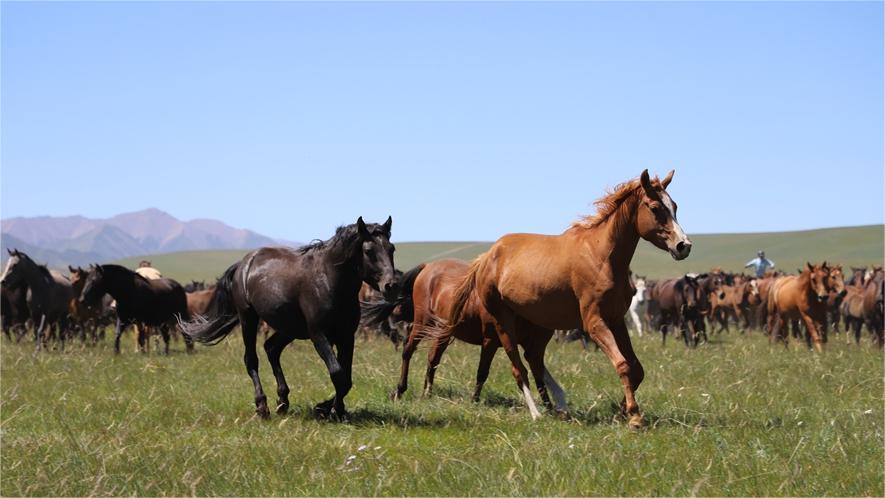AI-powered system assists Hebei nature reserve in protecting birds
As a bird flew over a nature reserve in North China's Hebei province on Friday, its beautiful song was immediately recorded and its species identified using a special system.
"It's a reed parrotbill, constantly emitting short and sharp chirping sounds," said Zhang Jingxing, a staff member at the Nandagang Wetland and Bird Nature Reserve in the Huanghua area of the city of Cangzhou.
Zhang learned via an artificial intelligence monitoring platform on his computer that the bird species was roosting at the reserve, and he could see a list of birds whose songs were recorded and the sounds of each.
"By 4 pm on Friday, the system had recorded 88 sounds from 37 bird species," Zhang said.
Since the system began operation in 2021, it has identified 197 different species, he added.
According to Zhang, the AI vocal monitoring system collects bird sounds using unmanned, specially equipped monitoring boats in reed marshes, and real-time sound data is analyzed by AI to record bird activity and analyze species distribution.
"By automatically comparing them with 1,569 bird call types in the system, bird species can be identified," he said, adding that the system also records images of birds in motion, which together with the sounds are used to identify bird species.
"This effectively addresses the limitations of traditional monitoring methods, improving monitoring efficiency and data accuracy," Zhang said.
Last year, with AI technology, the reserve recorded the black-faced spoonbill, an endangered species with only a few thousand remaining worldwide, demonstrating the important role of AI technology in biodiversity conservation, Zhang said.
"It has helped enhance bird conservation efforts through technology," he said.
Zhang said his work is becoming more meaningful because the Nandagang Migratory Bird Habitat was included on the UNESCO World Heritage Sites list as part of the migratory bird sanctuaries along the coast of the Yellow Sea-Bohai Gulf area of China.
The decision was made during the 46th session of the UNESCO World Heritage Committee, which was held in New Delhi, India, last month.
There are four other newly included sites as part of Phase II sanctuaries. Phase I sanctuaries were added to the World Heritage list in 2019.
The bird habitat in Nandagang has a total area of 3,810.6 hectares, accounting for 50.8 percent of the total area of the Nandagang Wetland and Bird Nature Reserve.
"The reserve belongs to a typical coastal wetland type, with the most intact marsh wetland ecosystem preserved in the (Bohai Gulf) ecological zone," said Zhang Jianguo, director of the Nature Reserve Management Office of Hebei's Forestry and Grassland Bureau.
More than 100,000 migratory birds were recorded in the reserve last year, compared with 20,000 in 2019. "The increase in the number of birds is closely related to the conservation efforts carried out in the reserve," he said.
In recent years, a natural wetland ecosystem has been gradually restored.
Photos
Related Stories
- Chinese scientists establish brain-inspired network model to bridge AI, neuroscience
- Pingxiang makes great efforts in boosting children wheels business
- Chinese enterprises fight AI hackers with robotic guardians
- Bairen Town ruins begin 5th excavation in Hebei
- N China’s coastal county transforms saline-alkali land into symbiotic grain-seafood farms
- Race for AI talent heats up amid demand
Copyright © 2024 People's Daily Online. All Rights Reserved.









